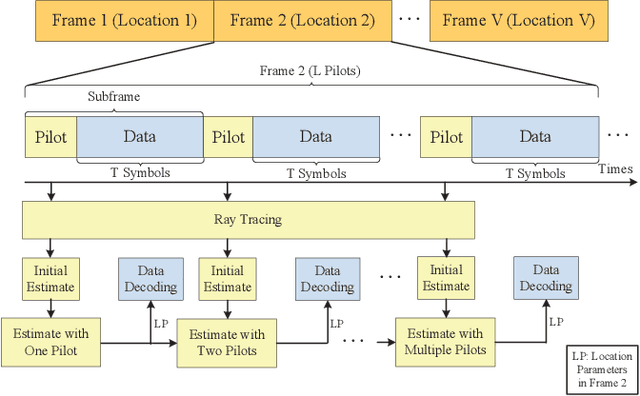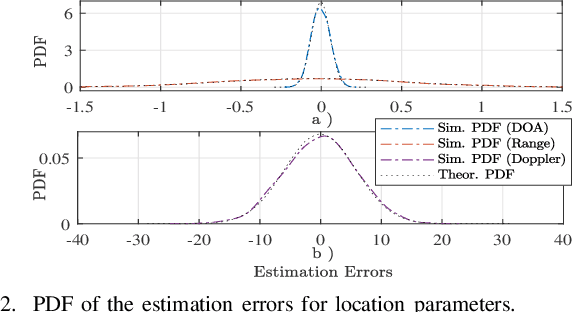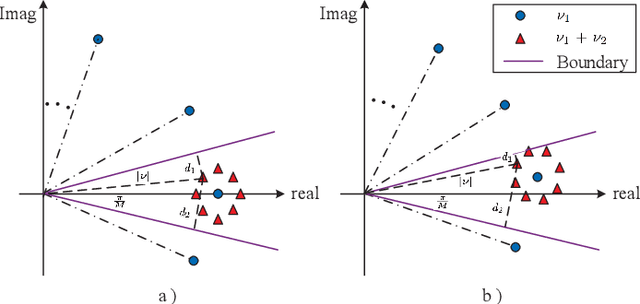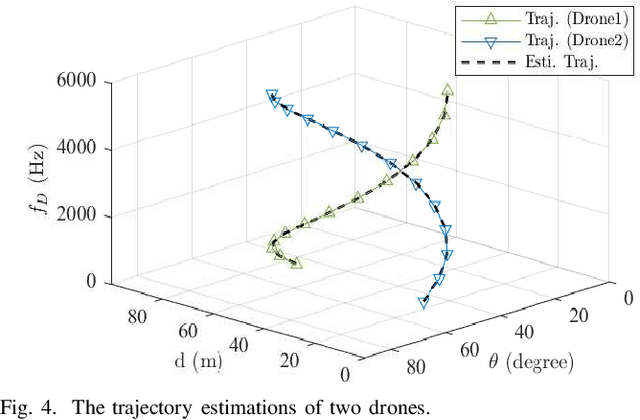Mohammad Ahmad Al-Jarrah
On the Performance of Pilot-Aided Simultaneous Communication and Tracking
Oct 09, 2024



Abstract:In this paper, the symbol error rate performance analysis is provided for a pilot-aided simultaneous communication and tracking (PASCAT) system. In specific, we employ multiple drones to actively transmit signals to a BS, which is responsible for continuously monitoring the location of drones over time and decoding the symbols transmitted from the drones. It is found that the estimated location parameters at a given moment during tracking follow Gaussian distributions with means equal to actual values and variances equal to root mean square error (RMSE). Afterwards, the obtained location information is employed for informing the channel information, which is then used to preprocess the received signal before decoding by using the maximum ratio combining (MRC) technique. The average symbol error rate (SER) is also evaluated over the distribution of the estimated location parameters and an approximate value for the average SER is obtained by using a Taylor approximation with fast convergence. The result indicates that there is a cooperation relationship between the RMSE of the estimated location parameters and the average SER. In addition, the effect of the number of pilot signals is analysed as well. By employing more pilots, it is found that both communication and sensing functionalities are enhanced. Furthermore, the SER performance of our PASCAT system is similar to that of maximum likelihood detection (MLD) when a number of pilot signals are employed, which demonstrates the efficiency of the PASCAT system. In the end, all results are validated by using Monte Carlo simulations.
Performance Analysis of Integrated Sensing and Communications Under Gain-Phase Imperfections
Nov 30, 2023Abstract:This paper evaluates the performance of uplink integrated sensing and communication systems in the presence of gain and phase imperfections. Specifically, we consider multiple unmanned aerial vehicles (UAVs) transmitting data to a multiple-input-multiple-output base-station (BS) that is responsible for estimating the transmitted information in addition to localising the transmitting UAVs. The signal processing at the BS is divided into two consecutive stages: localisation and communication. A maximum likelihood (ML) algorithm is introduced for the localisation stage to jointly estimate the azimuth-elevation angles and Doppler frequency of the UAVs under gain-phase defects, which are then compared to the estimation of signal parameters via rotational invariance techniques (ESPRIT) and multiple signal classification (MUSIC). Furthermore, the Cramer-Rao lower bound (CRLB) is derived to evaluate the asymptotic performance and quantify the influence of the gain-phase imperfections which are modelled using Rician and von Mises distributions, respectively. Thereafter, in the communication stage, the location parameters estimated in the first stage are employed to estimate the communication channels which are fed into a maximum ratio combiner to preprocess the received communication signal. An accurate closed-form approximation of the achievable average sum data rate (SDR) for all UAVs is derived. The obtained results show that gain-phase imperfections have a significant influence on both localisation and communication, however, the proposed ML is less sensitive when compared to other algorithms. The derived analysis is concurred with simulations.
 Add to Chrome
Add to Chrome Add to Firefox
Add to Firefox Add to Edge
Add to Edge